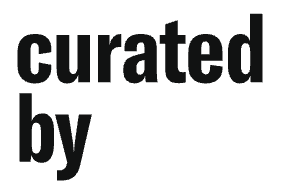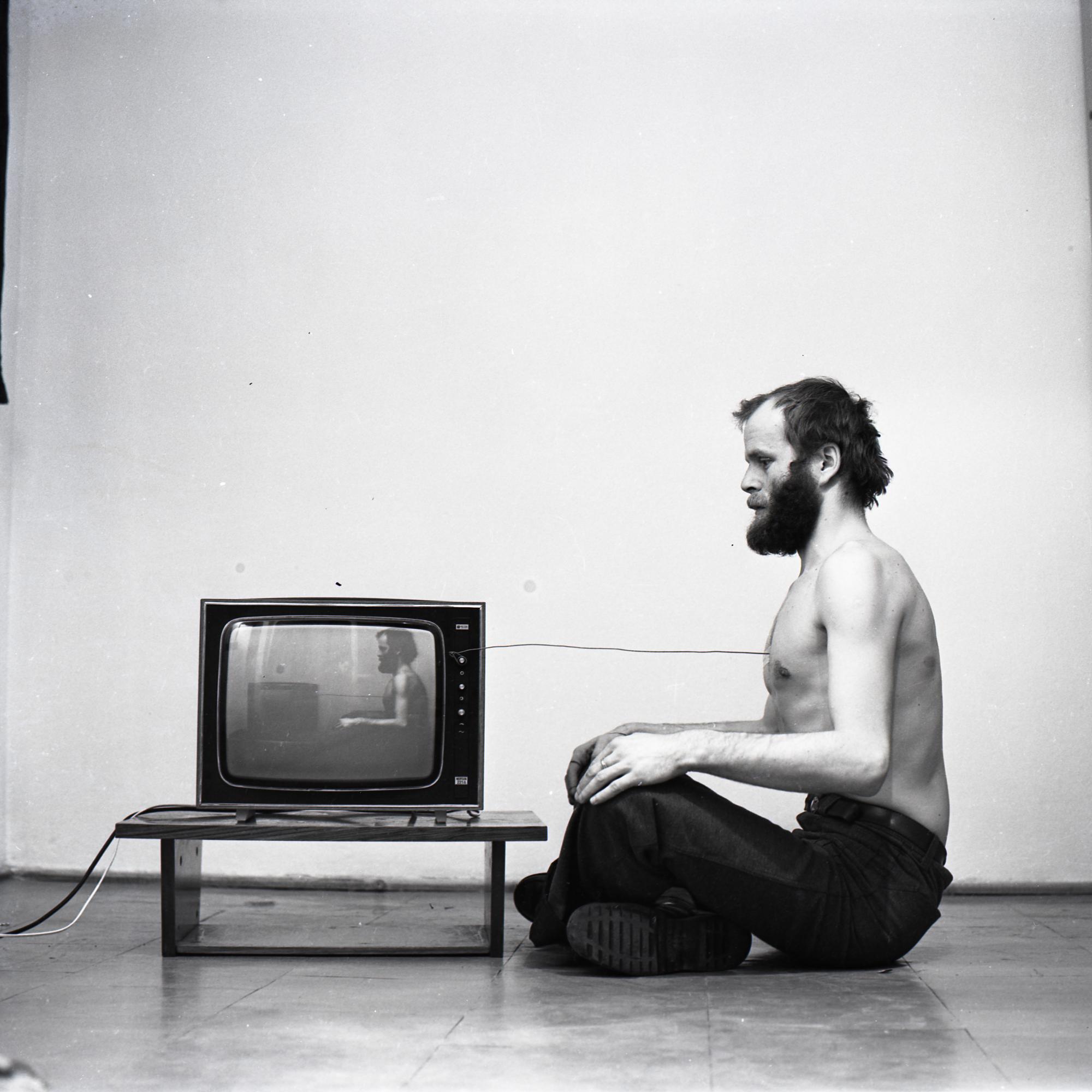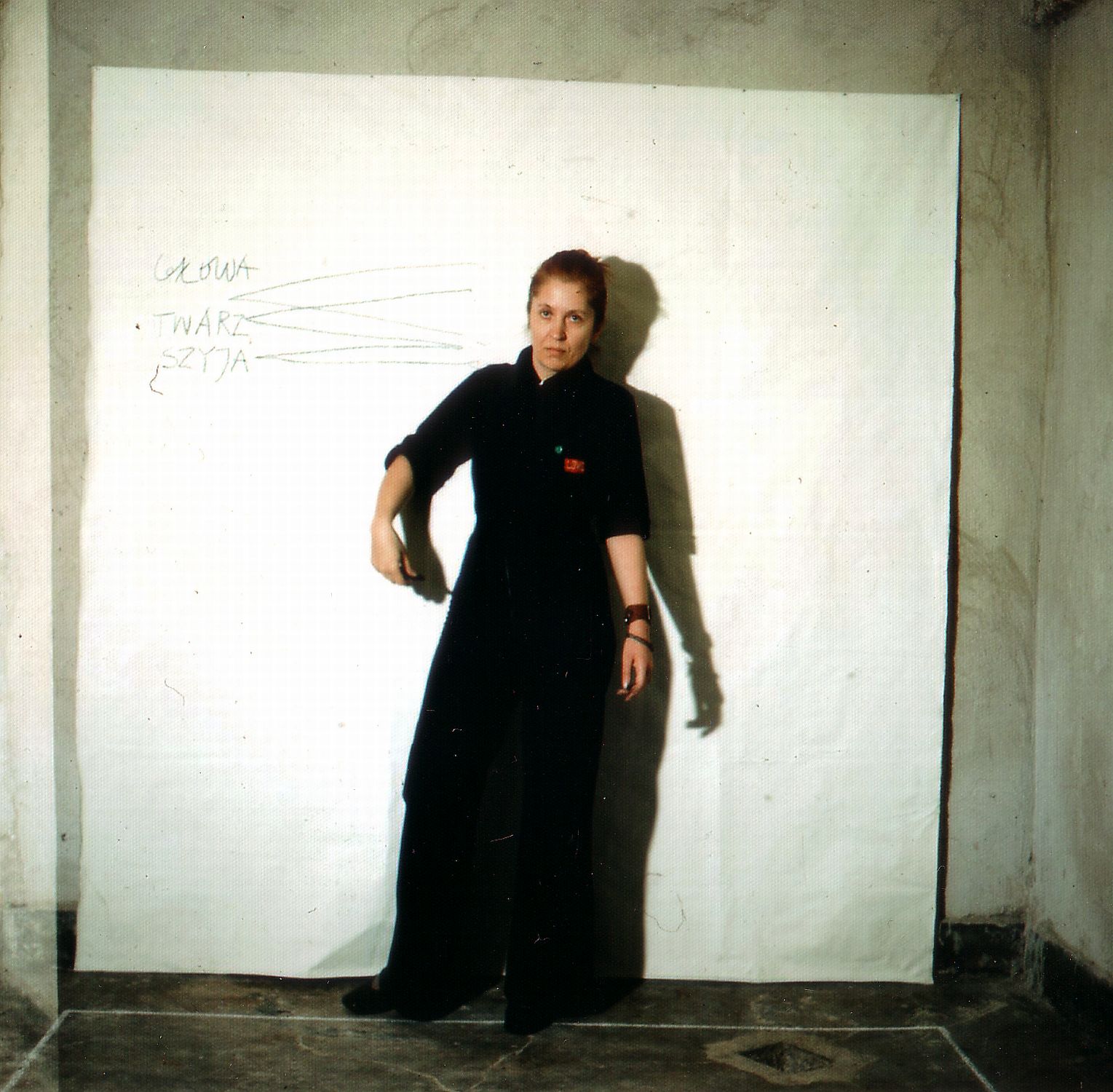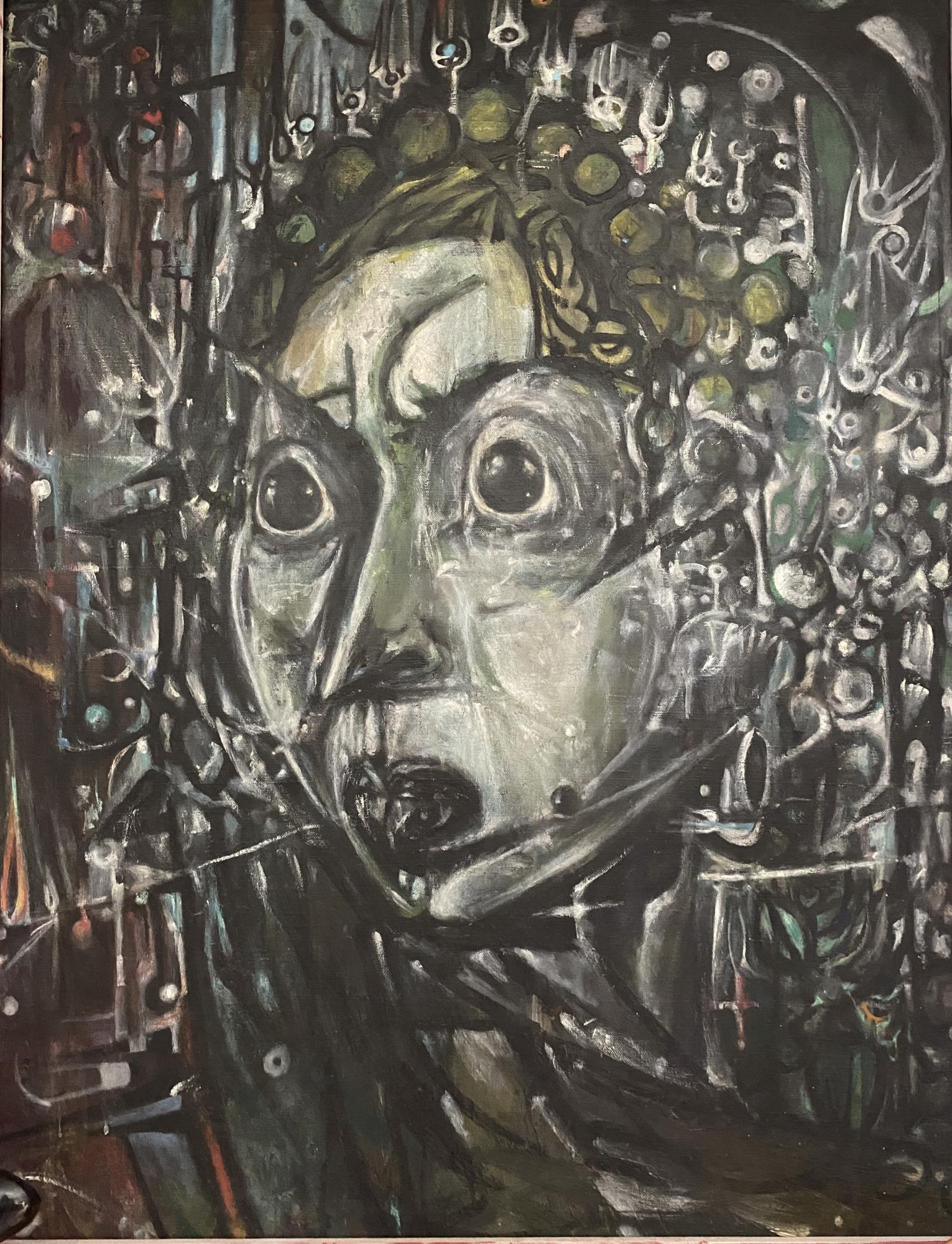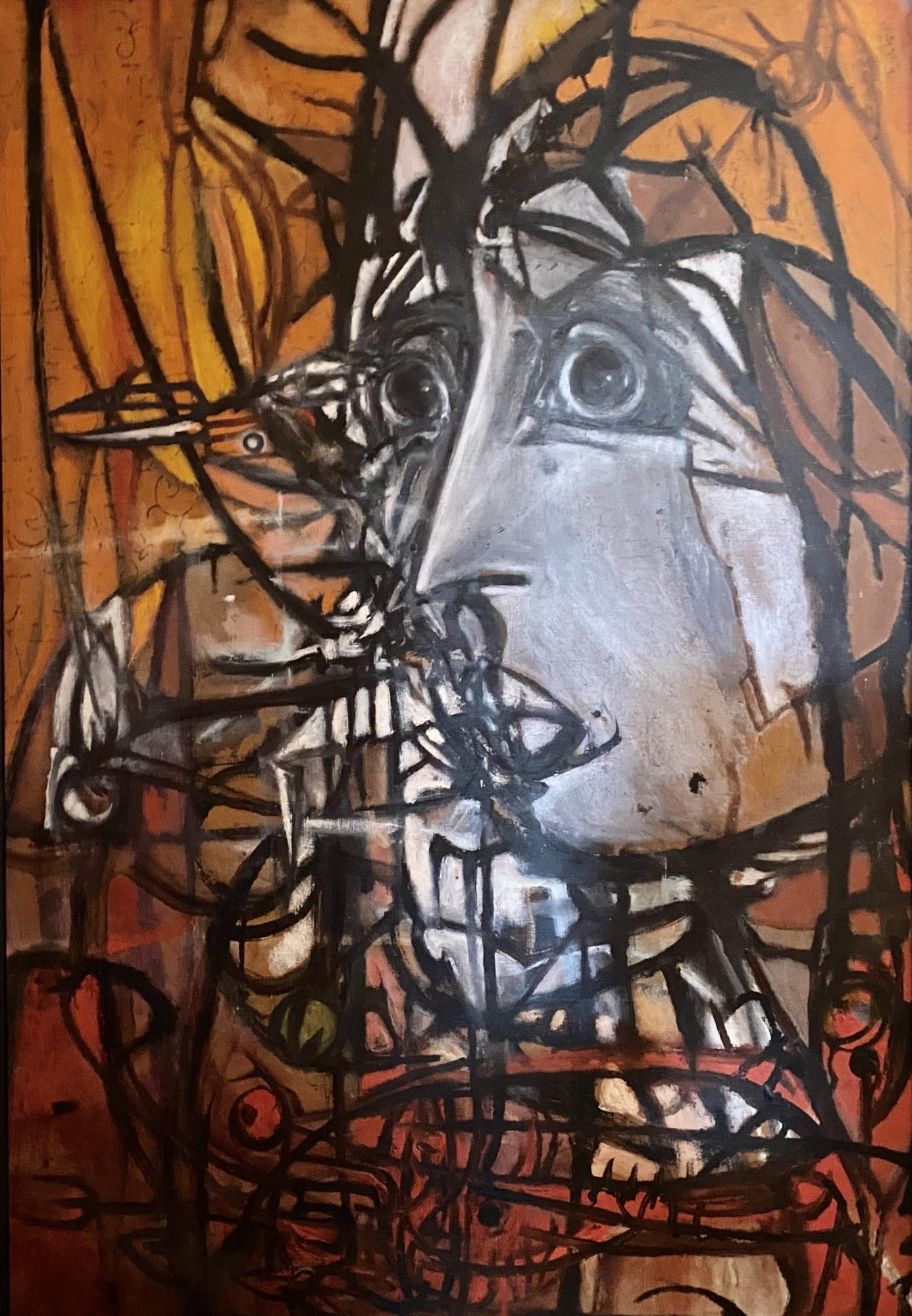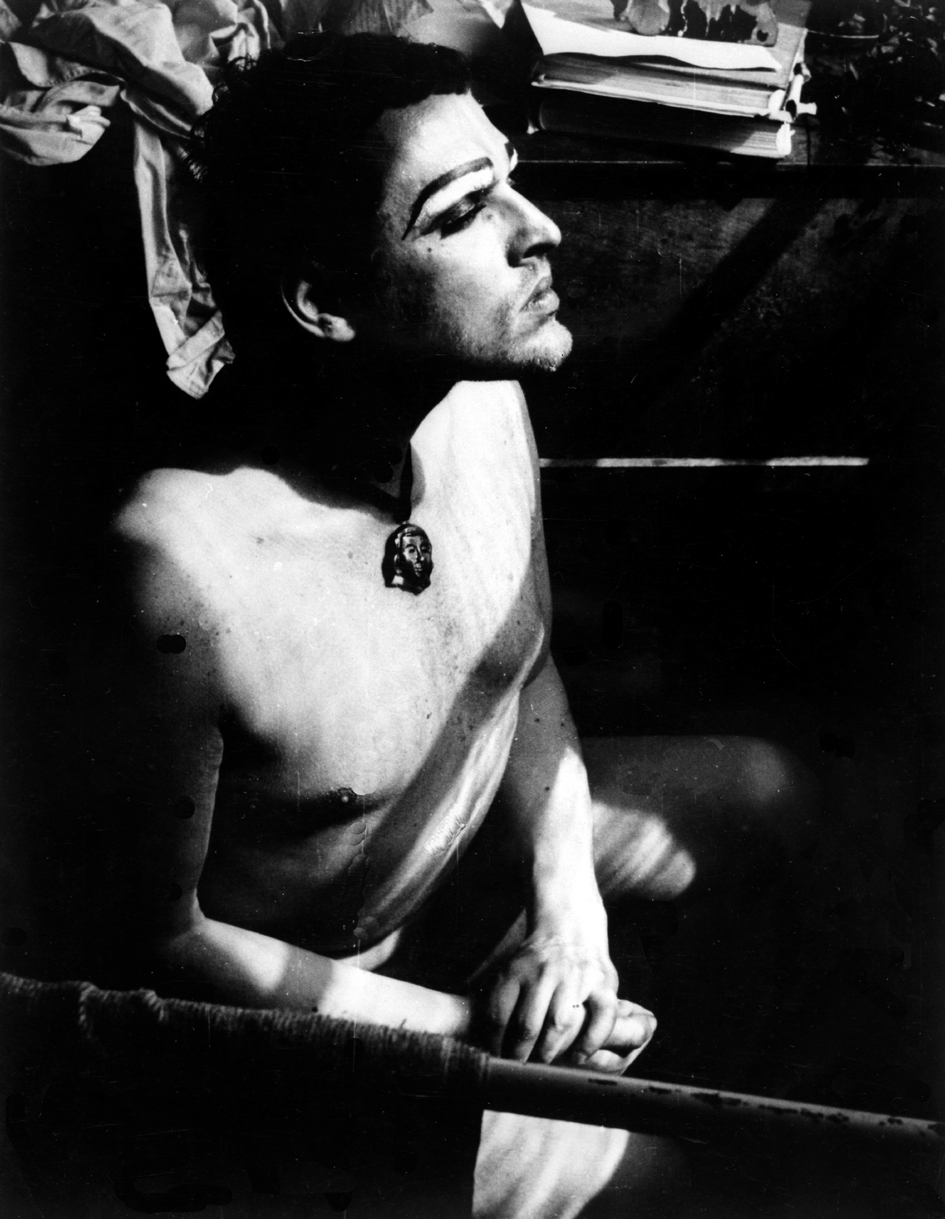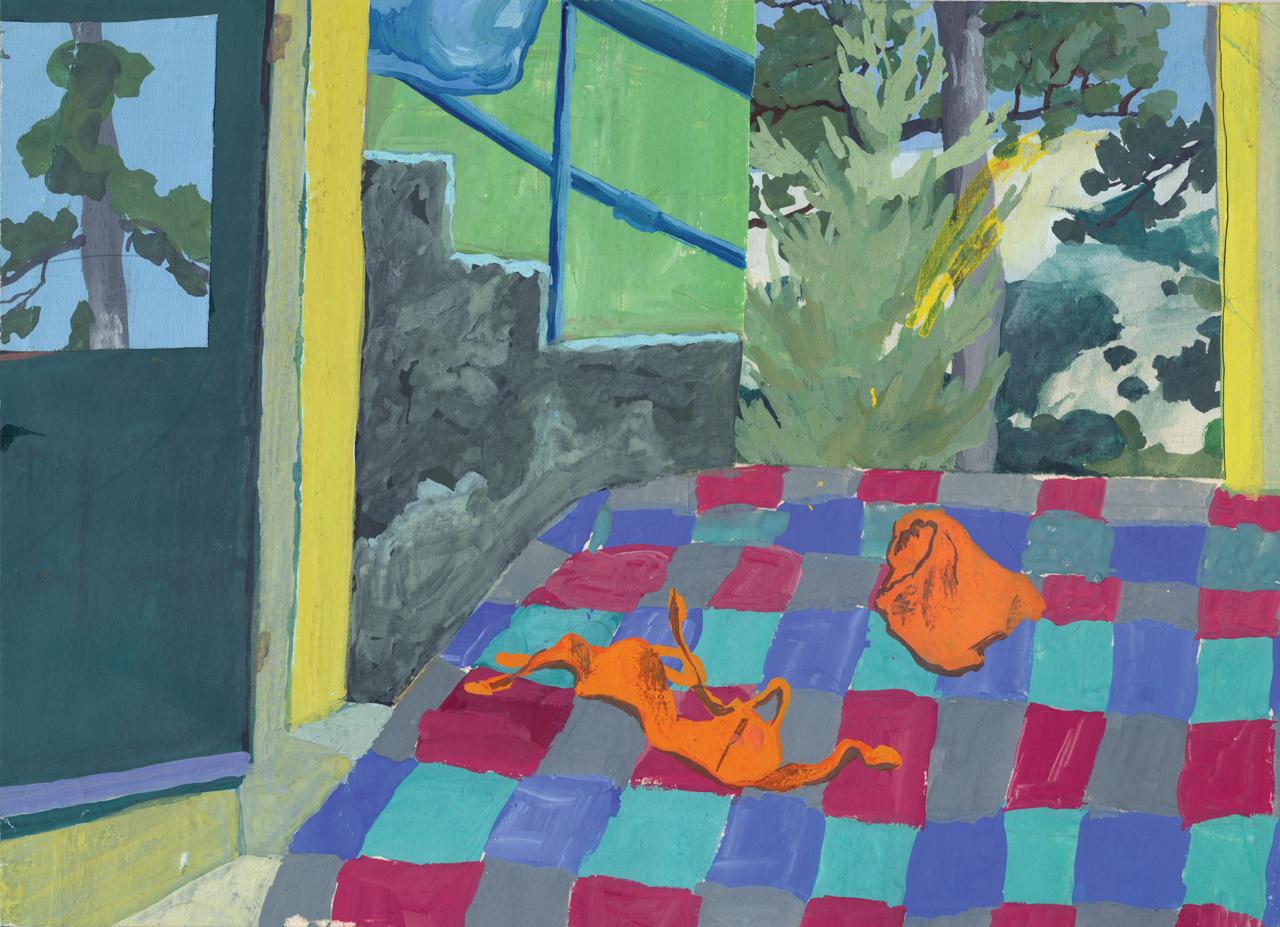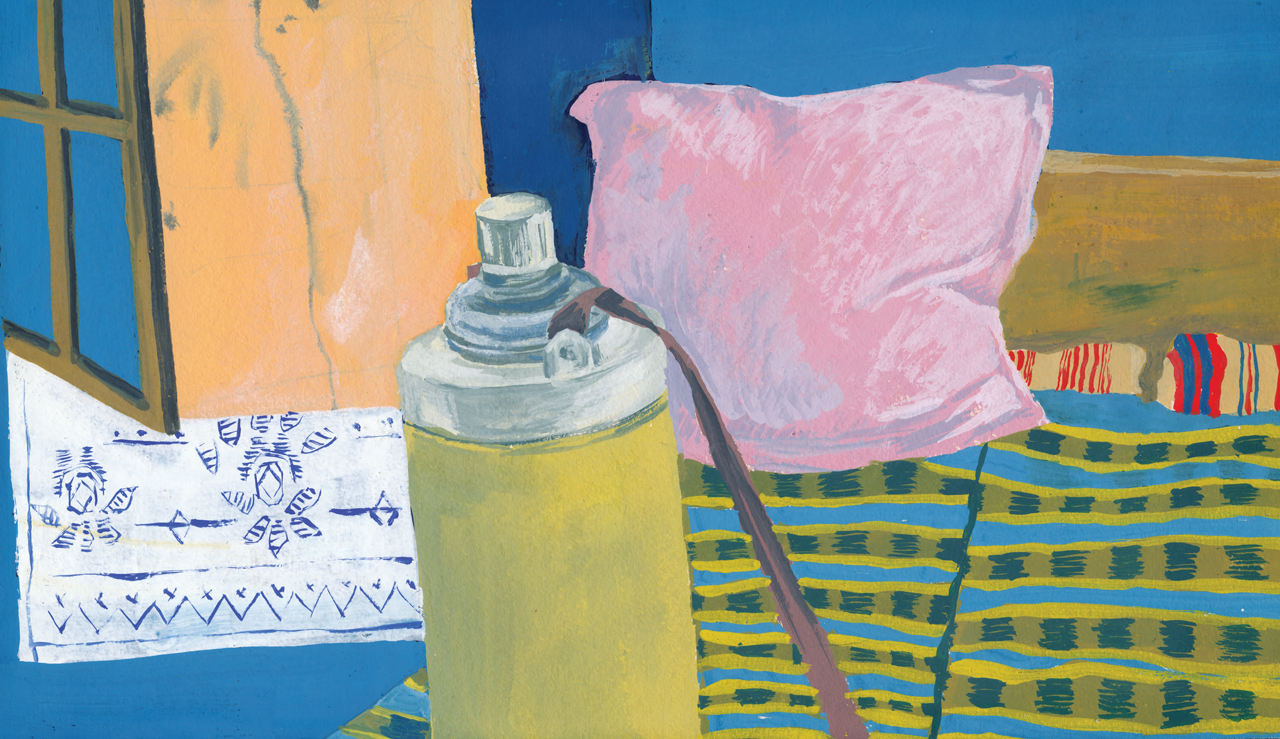Galerie Elisabeth & Klaus Thoman curated by Marika Kuźmicz
„You Will Hear When You See Me“

www.galeriethoman.com
Curator(s):


Artist(s):
-
Geta Brătescu MoreGeta Brătescu (b. Ploiești 1926, d. Bucharest 2018) is now widely regarded as one of Eastern Europe’s most important avant-gardists. In the Western art world, however, she remained largely obscure until her participation in documenta 14 in 2017 and the Venice Biennale of the same year. Questions of abstraction, the political potential of the image, and the subjective experience of self, memory, and history inform her stylistically diverse oeuvre in a wide range of media, which evolved under the repressive conditions of the Ceaușescu regime yet kept pace with the discourses of the Western avant-gardes. One of her most famous works is The Studio (1978), where Ion Grigorescu filmed her performance as she physically interacted with the room, measuring her size in the space and marking her place in the world. Her research on visual performative arts brought works like Towards White (1975), Self-Portrait and From Black to White (1976), in which her face and body play the main role in various theatrical sequences. In 2017 she represented Romania at the 57th Venice Biennale.
-
Paweł Kwiek MorePaweł Kwiek (b. Warsaw 1951 – d. Warsaw 2022) was a Polish contemporary visual artist, photographer, and cinematographer. In 1973 Kwiek completed the Łódź Film School with a degree in cinematography. He was a co-founder and member of the Film Form Workshop (1970–1980) and lecturer at the Warsaw Academy of Fine Arts (1977–1978) and the Łódź Film School (1978–1981). One of the forerunners of video art in Poland, he made experimental films, photography and video, and authored manifestations, statements, and multidisciplinary artistic events combining culture and disciplines such as philosophy and cybernetics. Kwiek’s work is found in the collections of MSN Warsaw, Muzeum Sztuki in Łódź, and the Kontakt Collection in Vienna. He had individual and group exhibitions including Documenta 6 (Kassel 1977); Works and Words (International Art Manifestation), Galerie de Appel (Amsterdam 1979); 1, 2, 3…Avant Garde, Ujazdowski Castle (Warsaw 2007); Künstlerhaus Stuttgart (2007); Sala Rekalde (Bilbao 2008); Changing Channels: Art and Television 1963–1987, mumok (Vienna 2010); In the Near Future: The Collection of the Museum of Modern Art in Warsaw (2014); Oskar Hansen: Open Form, MACBA (Barcelona 2014); and Rainbow in the Dark, SALT (Istanbul 2015).
-
Barbara Kozłowska MoreBarbara Kozłowska (b. Tarnobrzeg 1940 – d. Wrocław 2008) graduated from the Wrocław Academy of Fine Arts in 1965. She participated in some of the most important events for the Polish art scene in the 1970s and was a forerunner of performance art in Poland. In 1972 she launched the independent conceptual institution Babel Gallery at her private studio in Wrocław, which she ran until 1982 as an interdisciplinary meeting place for international artists. Kozłowska often used ephemeral, hardly perceptible, disinterested gestures in her art. Her works usually took the form of performance and elusive spatial interventions. Starting in 1970 she worked on the Borderline project, traveling to France, Germany, Italy, Malta, the Netherlands, Siberia, the UK, the US and Yugoslavia. Kozłowska participated in the seminal exhibitions of the Polish neo-avant-garde, including the Meetings of Artists and Art Theorists in Osieki (1970, 1971), the 4th Biennial of Spatial Forms in Elbląg (1971), and the survey Conceptual Reflection in Polish Art: Experiences of Discourse, 1965–1975 at Ujazdowski Castle in Warsaw (2000). Since her death, Kozłowska’s work has been the subject of retrospectives at EL Gallery Art Center in Elbląg (2010) and the Wrocław Contemporary Museum, curated by Marika Kuźmicz (2020), as well as solo shows at the Arton Foundation, Warsaw (2016, 2020), and group exhibitions at venues including Zachęta National Gallery of Art, Warsaw, the Museum of Contemporary Art, Zagreb, and Kunstmuseum Bochum.
-
Jürgen Klauke MoreJürgen Klauke (b. 1943 Cologne) is a singular phenomenon in contemporary art. Above all, he paved the way for staged photography by conceptualizing the photographic medium and elevating it to the immanent theme of his art. He raised the question of gender difference more emphatically and radically than others, exaggerating the problem of identity to the point of excess with sometimes provocative images. He himself speaks of the “aestheticization of the existential.” He was a participant in Documenta 6 & 8 and the Venice Biennale in 1980. Major national and international solo exhibitions of his work to date include shows at Nationalgalerie Berlin; Kunsthalle Hamburg; Museum Boijmans van Beunigen, Rotterdam; Museum Ludwig, Cologne; Kunsthalle Baden-Baden; Kunstmuseum Düsseldorf; Sammlung Goetz, Munich; Museum of Modern Art Saitama, Museum of Modern Art Shiga and Yamaguchi Art Museum, Japan; Rudolfinum, Prague; Bundeskunsthalle, Bonn; State Russian Museum, St. Petersburg; Maison Européenne de la Photographie, Paris; ZKM Karlsruhe; MdM Salzburg; Max Ernst Museum, Brühl; and Fundación Helga De Alvear, Cásseres.
-
Krzysztof Niemczyk MoreKrzysztof Niemczyk (b. Warsaw 1938 – d. Kraków 1994) was a self-taught writer, painter, performer, author of over 20 narratives (only two of them preserved to this day), but primarily the author of the epic novel The Courtesan and the Chicks, or a Crooked Mirror of Passionate Action, or A Study of Chaos (1965–1968), which was not published until 30 years later. In the late 1960s Niemczyk was closely associated with the Cricot 2 theatre established by Tadeusz Kantor, the Krzysztofory Kraków gallery, and the Foksal Gallery in Warsaw, but he never exhibited his works there. Rather, he created numerous spontaneous and controversial actions and performances in public. Regarded as a genius by some, such as Kantor, and dismissed by others as a madman, he was persecuted and arrested, and spent many months in prison and in psychiatric hospitals in Kraków. His legendary apartment, which in the 1960s was a mecca of the Polish hippie movement and in 1965 was visited by Allen Ginsberg, was destroyed. What remains of his legacy is mostly his epic novel, a few narratives, fascinating correspondence with his sister and friends including Anka Ptaszkowska, paintings, photographs documenting his “actions” and happenings, and his self-portraits in various media. The paintings and photographs, and the eponymous courtesan from his novel—an alter ego of the author—have built the image of Krzysztof Niemczyk as the first Polish 20th-century queer artist. In recent years, his works have been exhibited at MOCAK Kraków, MSN Warsaw, and Documenta 14, among other venues.
-
Edita Schubert MoreEdita Schubert (b. Virovitica, Yugoslavia (now Croatia) 1947 – d. Zagreb 2001) was a Croatian painter. A 1971 graduate of the Academy of Fine Arts Zagreb (class of Miljenko Stančić), from 1972 to 2001 she worked as a sketch artist in the anatomy department of the University of Zagreb School of Medicine. At first, her work was hyperrealist, then she created installations with a magical tension in humble materials (leaves, fabric, sand) which she combined with painted surfaces. In the 1980s her work related to several trends, primarily the trans-avant-garde, in a local version called Nova Slika. By the late 1980s, she was painting compositions of intense colours in the spirit of the New Geometry. Seeking to combine the individual level of reality with the wider context, she started working on Ambiental installations. Early in her career, in the late 1970s, she began working in the medium of photography. Schubert exhibited widely in her native Croatia during her three decades of artistic activity, including representing Yugoslavia in the Venice Biennale and the 4th Sydney Biennale (both 1982). She was the subject of a comprehensive posthumous retrospective at the Klovićevi Dvori Gallery in Zagreb.
Exhibition text
More
Sometimes if a story from the past needs to be told, it will find its own way to reach the present, to resonate with our here and now. But stories need to be persistently sought out, their linearity reconstructed, the paradoxes they contain heard, to find an audience, to be known, sometimes for the first time, even though years may have passed since they happened. All this time, the story may have remained silent, only to suddenly find itself, appear, be heard, change something just by having happened.
Stories have their protagonists, and to really tell their story, you must see them. Only then will the words form a narrative, and resonate. Perhaps this is why the creation of self-portraits has so often become a gesture of emancipation, of making one’s presence known and telling one’s own story. This has played, and revealed, a special role in the art history of women, who for centuries were deprived of the opportunity to study in academies, so that often their own face and body was the only model available to them. Creating self-portraits was and is also a key way for them to express their sexual identity, which could not resonate due to social restrictions.
You Will Hear When You See Me is an exhibition of self-portraits created in various Central and Eastern European countries in the 1960s and 1970s, inspired not so much by a desire for self-memory as to build and mark the artist’s place in a particular context, and through this gesture, to loosen the norms and rules that created it. By marking their presence, by documenting it, by the brute fact of recording their being, artists from this part of the world defined, built and constructed their subjectivity. In the creative process they often had to face the mechanisms of censorship, sometimes in a milder form, but sometimes they worked in the context of an extremely oppressive regime, where even the mere painting of their own image could become grounds for persecution.
Such was the case with one of Romania’s most important artists, Geta Brătescu. Self-portraiture holds a special place in her work. Brătescu examined life under the totalitarian regime in communist Romania, posing questions of identity, self-censorship and private spheres to reflect the widespread repression and the artistic ban on deviation from official state lines.
Her work focused heavily on the contradiction between the official state artistic direction, which rejected and punished any aesthetics questioning the regime, and the haven of private studios, where artists managed to evade censorship. Brătescu explored this reality in a collage of self-portraits called Censored Self-Portrait. The artist’s face covered by collage strips drawing attention to her mouth and eyes is a silent but effective testament to the stifling political environment of communist Romania.
Literal performative actions using both the self-portrait and the medium of painting were realized by Croatian artist Edita Schubert. Her work with the canvas consisted not only of painting it, but above all of cutting it. In some works, through the cut slits, we can see fragments of Schubert’s body, a female artist attempting to transcend not only the limits of the medium, but perhaps also the limits of the male-dominated art world.
On the other hand, Barbara Kozłowska, a Polish artist who executed her performance piece Border Line over several decades, marked and documented her presence on the beaches of the world. Behind the action was the conceptual idea of drawing a line across the entire earth, all the way to the moon, but in essence it can be read as a gesture of freedom, another challenge to an oppressive state that restricted its citizens’ ability to move freely. An additional aspect of Kozłowska’s work was her creation of different versions of her biography, which she distributed through her mail art or exhibited together with her documentation from Border Line.
Another sort of challenge to the system is Video A, a “partial” self-portrait by Paweł Kwiek, one of the first video works made in this part of Europe, created in the studio of a state TV station, where it was also broadcast in 1975. At the same time, Kwiek reveals to viewers the mechanism of image manipulation, and defines his position in relation to others and in relation to the space and the cameras recording him.
The creation of photographic and painterly self-portraits was the domain of the Polish artist, outsider, performer and writer Krzysztof Niemczyk, who developed an alter-ego, the female character the Courtesan referenced in the title of his novel The Courtesan and the Chicks, or a Crooked Mirror of Passionate Action, or A Study of Chaos. While he was writing the book, he painted androgynous self-portraits and also applied makeup to himself for the purpose of creating photographs, which together with the oil paintings were a kind of visualization of the Courtesan. Most of the oeuvre of Niemczyk, who was persecuted among other reasons due to his sexual orientation, was destroyed by the secret police. Like the German artist Jürgen Klauke, Niemczyk challenged the explicitness of sexual orientation. With his own self-portraits, Klauke operated on the boundary of gender identity, polemicizing against the social imperative to define that identity. All of these attitudes do not exhaust the possibilities of using self-portraiture on the path to personal and artistic emancipation, but they do provide a good starting point on the subject.
Self-portraiture is one of the most vital tools for exploring identity, including gender identity, and telling a story, as German artist Jürgen Klauke does. His photographic self-portraits created over several decades are a story of how fluid gender identification is. The next step in the creation of self-images is photographs of his own body taken with an X-ray machine. This self-photographic visual narrative by Klauke throws down a gauntlet to societies that categorize and label, and have recurring and renewed problems with individuals who defy categorization.
All the stories presented in the exhibition are stories from the past, found in the archives, rescued from past time and oblivion. They can serve as a touchstone for our struggle with the complexity of everyday life and identity, and raise crucial questions.

